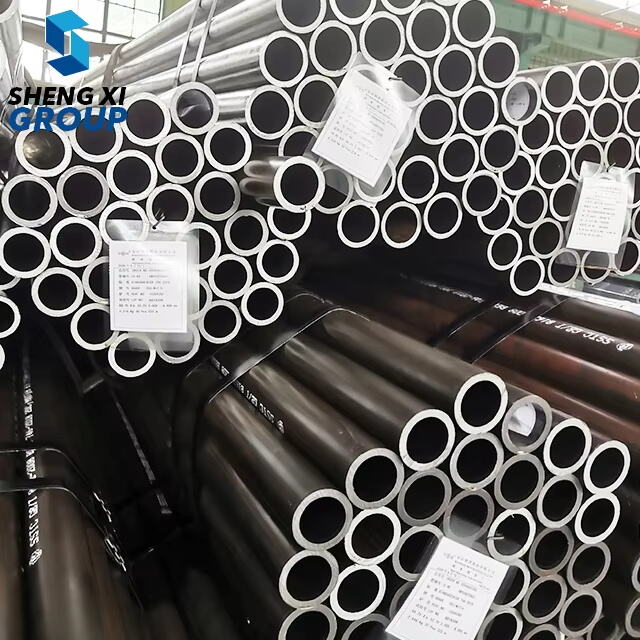Boiler Tube Inspection Protocols for Optimal Performance
Visual Inspection and Non-Destructive Testing Methods
Looking at boiler tubes visually helps spot surface problems like cracks, corrosion spots, and areas of pitting on the outside. These kinds of damage usually show up first when something might go wrong with the tube, so catching them early during regular checks saves money down the road by avoiding unexpected shutdowns. Most inspection programs start with visual checks because it gives technicians a chance to fix what they can see right away before small issues turn into bigger headaches later on.
Visual checks are important but not enough when it comes to inspecting boiler tubes. That's where non-destructive testing methods come into play. Techniques such as ultrasonic testing, radiography, and magnetic particle inspection have become essential tools for maintenance teams. Take ultrasonic testing for instance. It actually works in two main ways - there's the A-scan which gives us a basic line view showing how thick the metal is and if there's any corrosion happening. Then we get the B-scan that creates sort of a slice through the tube wall, giving a much clearer picture of what's going on inside. The choice between these different testing approaches really boils down to what kind of problems engineers are worried about and what condition they find the tubes in during their initial assessment.
Case studies across various industries show how non-destructive testing (NDT) methods can catch problems in boiler tubes long before they become serious issues. Take ultrasonic testing as one example many facilities now rely on regularly. Maintenance crews have found this technique spots tube thinning that simple visual checks just don't pick up. By catching these issues early, companies avoid expensive breakdowns down the road. Some plants report saving thousands each year simply by implementing routine NDT checks instead of waiting for visible signs of wear.
Frequency Guidelines and Documentation Standards
Creating regular inspection schedules matters a lot for equipment health, and these schedules need to take into account how long things run and what kind of conditions they face day to day. When it comes specifically to boiler tubes, figuring out how often to check them depends on several factors including what material they're made from, where they operate, and their past performance record. The results? Better maintenance decisions over time. Most industries follow some established rules here. Organizations like ASME and API have put together pretty good recommendations that many plants use as a starting point when setting up their own inspection plans. These standards give folks something concrete to work with instead of just guessing at intervals between checks.
Good record keeping plays a vital role in managing boiler tubes effectively. When operators maintain detailed notes about inspection results, what they find during checks, and the fixes they apply, they create a historical reference for how those tubes are holding up over time. These records turn out to be really helpful when looking at trends and planning maintenance work. They give us the actual data points we need to spot potential problems before they happen and adjust our maintenance calendar accordingly across the whole plant.
Regular documentation is also a significant asset for compliance with industry standards, ensuring that every inspection and maintenance action aligns with current best practices. This, in turn, facilitates better decision-making processes, enabling engineers to optimize preventive maintenance activities and reducing the likelihood of unexpected tube failures.
Effective Cleaning Techniques for Boiler Tube Maintenance
Mechanical Descaling vs Chemical Cleaning Approaches
Picking between mechanical descaling and chemical cleaning matters a lot when it comes to keeping boiler tubes in good shape. For mechanical work, folks usually go with wire brushing or those pneumatic tools. Wire brushing gets the job done for light stuff but won't cut through heavy buildup. Pneumatic tools dig deeper but need someone who knows what they're doing. Then there's the chemical route with stuff like citric acid or hydrochloric acid that eats away at tough scale deposits. The catch here is matching the right chemical to whatever's clogging things up otherwise bad reactions happen. What works best really depends on how bad the fouling is and whether the chemicals will play nice with the boiler material. From a budget standpoint, mechanical cleaning typically costs less upfront but might miss serious deposits that only chemicals tackle. Stick with the right cleaning method though and boilers run better over time, saving money in the long haul.
Post-Cleaning Evaluation and Quality Assurance
A good post cleaning check makes sure everything gets done right when it comes to boiler tube maintenance. The basic stuff includes looking at the tubes again after cleaning, either by eye or with some tests, just to confirm they're actually clean and not still covered in those stubborn deposits. We need quality standards in place too because nobody wants their boiler tubes falling short on performance specs due to leftover grime. All these inspection results should go into proper records so we can track what works and what doesn't over time. Detailed documentation helps set realistic goals for future maintenance work while making things transparent across departments. When teams have access to past cleaning data, they make smarter decisions about when and how to schedule the next round of maintenance activities.
Corrosion Prevention in Boiler Tube Systems
Protective Coatings and Cathodic Protection Methods
Selecting appropriate protective coatings for boiler tubes remains essential when it comes to fighting corrosion effectively. The market offers several choices including high temp paints and various polymer based coatings, all built to handle different environmental challenges. High temperature paints work best where there's constant exposure to heat, whereas polymer coatings tend to hold up better in places with acidic or alkaline conditions. Alongside these coating solutions, cathodic protection remains a key strategy for keeping boiler systems safe from rust and degradation. This approach typically requires placing sacrificial anodes at strategic points around the system to neutralize those pesky electrochemical reactions. Many industrial facilities have reported significant benefits from combining multiple protection strategies. One power plant cut maintenance expenses by nearly 30% after implementing both polymer coatings and cathodic protection together. Of course, regulatory requirements like ASME standards still shape many coating decisions, so operators need to stay aware of these guidelines when specifying materials for their particular applications.
Monitoring Strategies for High-Corrosion Areas
Keeping an eye on those spots in boiler systems where corrosion tends to be worst makes all the difference for any good predictive maintenance plan. To find out where these problem areas might be, we look at things like local humidity levels and nearby industrial activity that could be contributing to the issue. Putting in place corrosion probes and various sensors lets plant operators collect actual data as it happens, which helps them figure out just how fast different parts are wearing down. When combined with proper data analysis techniques, this information creates models that can actually predict when maintenance will be needed before problems occur. A solid ongoing monitoring setup works really well alongside regular maintenance schedules, helping companies save money by allocating resources where they're most needed and catching issues before they become major headaches. The result? Longer lasting boiler tubes and operations that are much more environmentally friendly. These monitoring methods show exactly how modern technology and smart maintenance practices work hand in hand to keep boiler systems running smoothly for years.

Managing Thermal Stress in Boiler Tubes
Controlled Startup/Shutdown Procedures
Thermal stress management remains a key concern when running boilers, and proper control of startup and shutdown processes makes all the difference. Every time operators bring a boiler online or take it offline, the equipment faces considerable thermal stress that builds up over repeated cycles, eventually causing fatigue issues and structural damage. The best approach involves slowly ramping temperatures up and down rather than sudden changes, allowing thermal expansion to spread evenly throughout the entire system. This careful temperature management significantly reduces stress points on boiler tubes and extends their service life. Many industrial facilities have implemented effective strategies like installing advanced temperature sensors and automated monitoring systems that help prevent those dangerous thermal shocks. Training plant personnel properly is absolutely essential for getting these procedures right. Well-trained operators understand not just how to follow protocols but why each step matters for both safety reasons and long term operational efficiency in boiler maintenance.
Expansion Joint Maintenance Best Practices
Expansion joints really matter when it comes to handling thermal stress because they let boiler tubes expand and contract naturally as temperatures change. Checking these joints regularly isn't just good practice it's absolutely necessary since worn out or failed joints create serious stress points that can cause bigger problems down the road. When doing maintenance work, technicians should look closely for cracks, corrosion spots, or other signs something isn't right while making sure nothing is blocking movement or collecting dirt around the joints. Putting together data from how well expansion joints perform alongside other boiler readings gives plant operators valuable insights that help extend component life and boost system efficiency over time. Keeping expansion joints in top shape goes hand in hand with managing thermal stress effectively, which means safer operations and better performance from boilers across different industrial settings.
Water Chemistry Management for Tube Longevity
Balancing pH and Oxygen Levels
Getting the pH levels right in boiler water matters a lot for stopping corrosion and scale buildup, something that can really cut down how long those boiler tubes last. Regular checks and tweaks to the water chemistry help keep things running smoothly, especially when it comes to getting rid of excess oxygen that causes rust problems. Take deaeration methods for example they work wonders at lowering oxygen content in the system, which means less chance of corrosion happening over time. Real world examples back this up too many plants report longer lasting equipment when they stick to proper pH balance and oxygen control routines. Industry pros who deal with water chemistry day in and day out recommend investing in modern testing gear because it makes all the difference when making necessary adjustments quickly and accurately, cutting down on unexpected breakdowns and costly repairs down the road.
Scale Prevention through Water Treatment
Calcium and magnesium are real troublemakers when it comes to boiler efficiency because they form deposits that block proper heat transfer. A good water treatment plan is absolutely essential if we want to stop this scaling problem before it starts. The treatment usually involves things like ion exchange where hard minerals get swapped out for sodium ions, plus reverse osmosis systems that filter out all sorts of impurities from the water supply. Industry research shows these approaches work pretty well across different facilities, making them go-to solutions for keeping scale at bay. Getting familiar with the regulations around water treatment isn't just about ticking boxes either. When companies follow established water quality guidelines, they avoid those frustrating shutdowns and keep their boiler tubes intact for much longer periods. Most plant managers know firsthand how costly neglecting these standards can be in the long run.
Predictive Maintenance Technologies for Boiler Tubes
IoT Sensors and Real-Time Monitoring Systems
Bringing IoT tech into boiler tube monitoring marks a significant shift in how facilities manage their operations day to day. These smart systems gather live information from all corners of the plant, giving engineers much better insight when making decisions about maintenance schedules. The continuous watch on boiler tubes means operators can spot signs of wear long before they become serious problems, which cuts down unplanned shutdowns and keeps equipment running longer than ever before. Take steel mills for instance where companies have already implemented these sensor networks to predict tube wear patterns months ahead of time. This early warning system lets maintenance teams plan repairs during scheduled downtimes instead of scrambling to fix emergencies. Looking ahead, most industry experts agree that thermal power plants will keep expanding their IoT capabilities over the next five years, with some estimates showing up to 40% reduction in maintenance costs by 2028 as these systems mature and integrate deeper into core operations.
Data Analytics-Driven Failure Prediction Models
Boiler tube failures can be predicted well in advance thanks to data analytics, which helps keep operations running smoothly. Looking at past performance numbers allows engineers to build models that spot problems before they happen, giving plant managers a real edge. Most modern approaches bring in machine learning tech these days, which makes those regular maintenance checks way better planned out. Some factories have seen amazing results from this stuff. One steel mill actually doubled their boiler tube lifespan after implementing these predictive methods, while cutting down on unexpected repairs. Although there's still some resistance in older facilities, more and more industrial plants are starting to see the value in using data for maintenance planning instead of just following old school schedules.
Safety and Training in Boiler Tube Maintenance
Certified Technician Training Programs
Keeping boiler tubes in good shape requires skilled technicians who know their stuff. Proper training isn't just nice to have it's essential for getting maintenance done right while staying safe. When technicians are properly trained, they can fix problems faster, which means less time waiting around for repairs and better system performance overall. To get certified, boiler techs need to learn all sorts of things from how heat works inside boilers to following strict safety rules during inspections. Many trade schools and vocational centers run great training programs specifically designed for people entering this field. Some even partner with local power plants to give hands-on experience. Ongoing learning matters too because boiler technology keeps changing. Technicians who keep up with new methods and equipment tend to spot potential issues before they become major headaches, making the whole operation run smoother day after day.
Lockout-Tagout and PPE Requirements
Safety protocols must be followed when working on boiler tubes, especially procedures such as Lockout-Tagout (LOTO). When properly implemented, LOTO stops machines from accidentally starting up while maintenance work is being done, reducing the risk of serious accidents. Personal protective gear remains just as critical. Hard hats, safety glasses, gloves and flame resistant clothing form a physical shield against many common workplace hazards. Good companies invest time creating detailed LOTO programs tailored to their specific operations rather than just following generic templates. Workers also need proper training on how to use all this protective equipment correctly. Industry data shows around 60% of workplace injuries still stem from contact with machinery. Following OSHA standards isn't merely good practice it's absolutely required to keep personnel safe. These basic precautions have saved countless lives over the years.
FAQ Section
How often should boiler tube inspections be conducted?
Boiler tube inspections should follow a routine schedule based on operational hours, material type, and service conditions, often guided by industry standards such as those from ASME and API.
What testing methods are best for detecting boiler tube failures?
Non-Destructive Testing methods such as ultrasonic testing, radiography, and magnetic particle testing are highly effective for identifying potential failures before they escalate.
What is the role of water chemistry in boiler tube longevity?
Maintaining proper pH and oxygen levels in boiler water prevents corrosion and scale-forming, which can shorten tube lifespan. Regular testing ensures optimal water chemistry.
How can IoT enhance boiler tube maintenance?
IoT technologies facilitate real-time monitoring and data collection, enabling predictive maintenance strategies and early detection of wear and potential failures.
Table of Contents
- Boiler Tube Inspection Protocols for Optimal Performance
- Effective Cleaning Techniques for Boiler Tube Maintenance
- Corrosion Prevention in Boiler Tube Systems
- Managing Thermal Stress in Boiler Tubes
- Water Chemistry Management for Tube Longevity
- Predictive Maintenance Technologies for Boiler Tubes
- Safety and Training in Boiler Tube Maintenance
- FAQ Section


